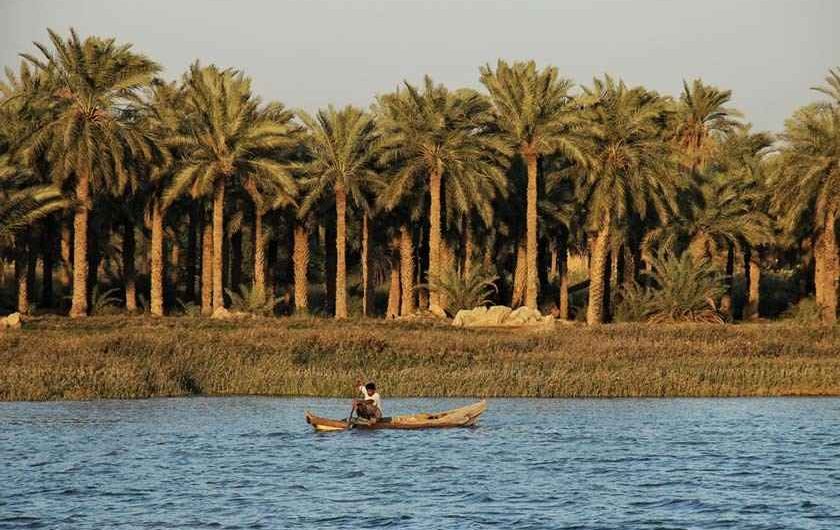Abadan
The capital of the county of Abadan, province of Khuzestan, is located on the border of Mesopotamia inferior. It is a vast plain at the foot of the Zagros Mountains, overlooking the Persian Gulf.
It is located on the island of Abadan (68 km long, 3-19 km or 2-12 miles wide), bounded by the Shatt al-Arab River to the west, the Karun River to the north, and the Persian Gulf to the south. In medieval times it served as a source of carpets, woven straw, a supplier of salt and a navigation center for travelers and sailors.
The modernization of the city began in 1910 due to the oil industry. The first oil refinery, opened by the Anglo-Persian Oil Company in 1912, with an annual capacity of 120,000 tons, became one of the largest refineries in the world in the 1960s. In 1948, the refinery’s employees accounted for one third of the city’s population, which was about 100,000, making Abadan the fifth largest city in the country.
Relations between immigrants and locals were strained, as its palm trees gave way to an industrial city. But the industry also generated a new dynamic. In 1918, battered Indian migrant workers protested against the company and when they called for a strike to demand higher wages, they signaled the birth of the oil workers’ movement.
The war between Iran and Iraq (1980-1988) caused serious damage to the refinery and the city. Most of the population left the city during the war, but some returned in the 1990s, as most of the city had been rebuilt.
Abadanis are proud people and are characterized by their ironic exaggeration in Persian known as laaf, grotesque jokes, or lovingly exaggerated explanations.
Abadan Museum
Located on Ahmad Abad Street, it is a one-story building with a dome similar to that of the Danial-e-Nabí mausoleum. The museum opened in 1959 and was damaged during the Iran-Iraq war. After the looting, the museum’s valuables were kept in a safe place and, after the war, were on display again.
Armenian Church of San Garapet
One of the must-see national monuments and attractions in Abadan. This church is run under the supervision of the Council of the Armenian Caliphate in the South and in Isfahan. The Armenian Church of Abadan, founded in 1958, was considered the largest community of Armenians living in this city. The church was damaged during the war, but an organization tasked with rebuilding conflict zones repaired it.
Rangoon Mosque
Abadan refinery was launched as the first oil refinery in Iran and the main export center for petroleum products in the eastern hemisphere. As Abadan became known as one of the best-known industrial cities, thousands of British, Indian and Pakistani citizens migrated to the city. One of the first groups was the employees of the Yangon refinery, present-day Myanmar. Thus, they decided to establish a place of prayer on the land of the oil company and finally, with the agreement of this company, the mosque began to be built by the Pakistani workers of the Abadan refinery, founded in 1921.
The Rangoon Mosque was built in the architectural style of the Indian subcontinent with elegant and exceptional moldings. It is currently used as a museum for historical documents and manuscripts.
Fish market
Abadan, influenced by the Persian Gulf and air currents from Iraq and Saudi Arabia, enjoys a mainly hot and humid climate, especially in the summer. Today, Abadan is known for its fish market, a lively bazaar where locals buy the fresh catch of the day to make tasty dishes typical of the region. The Abadan Fish Market, a seafood lover’s paradise, is one of the major centers for fish sales in southern Iran. The variety of fish, shrimp, clams, … is so wide that it surprises visitors.



Comments